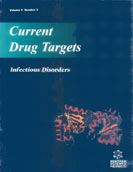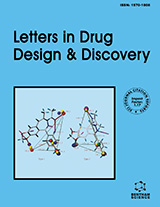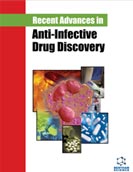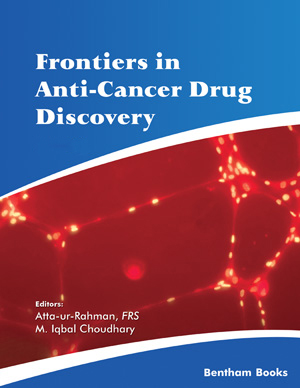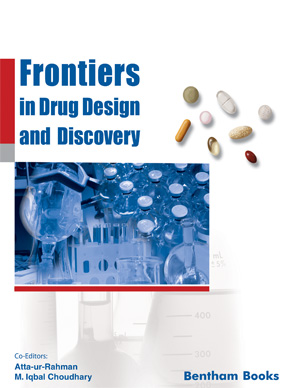Abstract
It has become apparent that the resolution of inflammation depends on the removal of unwanted inflammatory cells, a process governed by physiological apoptosis and non-inflammatory clearance of apoptotic cells. Granulocytes are central to many of the pathophysiological consequences of uncontrolled inflammatory reactions. Hemopoietic factors and cytokines play a critical role in regulating the longevity of these cells in vitro and in vivo. Here we review the progress that has been made in the understanding of granulocyte apoptosis and the implications for immunotherapy and pharmacological strategies in the treatment of allergic inflammatory diseases for therapeutic gain.
Keywords: eosinophil, neutrophil, inflammation, apoptosis, Il-5, gm-csf, glucocorticoids
Current Drug Targets - Inflammation & Allergy
Title: Regulation of Granulocyte Apoptosis by Hemopoietic Growth Factors, Cytokines and Drugs: Potential Relevance to Allergic Inflammation
Volume: 2 Issue: 4
Author(s): A. Walker, C. Ward, I. Dransfield, C. Haslett and A. G. Rossi
Affiliation:
Keywords: eosinophil, neutrophil, inflammation, apoptosis, Il-5, gm-csf, glucocorticoids
Abstract: It has become apparent that the resolution of inflammation depends on the removal of unwanted inflammatory cells, a process governed by physiological apoptosis and non-inflammatory clearance of apoptotic cells. Granulocytes are central to many of the pathophysiological consequences of uncontrolled inflammatory reactions. Hemopoietic factors and cytokines play a critical role in regulating the longevity of these cells in vitro and in vivo. Here we review the progress that has been made in the understanding of granulocyte apoptosis and the implications for immunotherapy and pharmacological strategies in the treatment of allergic inflammatory diseases for therapeutic gain.
Export Options
About this article
Cite this article as:
Walker A., Ward C., Dransfield I., Haslett C. and Rossi G. A., Regulation of Granulocyte Apoptosis by Hemopoietic Growth Factors, Cytokines and Drugs: Potential Relevance to Allergic Inflammation, Current Drug Targets - Inflammation & Allergy 2003; 2 (4) . https://dx.doi.org/10.2174/1568010033484025
| DOI https://dx.doi.org/10.2174/1568010033484025 |
Print ISSN 1568-010X |
| Publisher Name Bentham Science Publisher |
Online ISSN 1568-010X |
 1
1Related Articles
-
Discovery of N-Phenyl-4-(1H-pyrrol-3-yl)pyrimidin-2-amine Derivatives as Potent Mnk2 Inhibitors: Design, Synthesis, SAR Analysis, and Evaluation of in vitro Anti-leukaemic Activity
Medicinal Chemistry From Multiple PAR1 Receptor/Protein Interactions to their Multiple Therapeutic Implications
Current Topics in Medicinal Chemistry Exploring Molecular Approaches in Amyotrophic Lateral Sclerosis: Drug Targets from Clinical and Pre-Clinical Findings
Current Molecular Pharmacology Nature Promises New Anticancer Agents: Interplay with the Apoptosis-related BCL2 Gene Family
Anti-Cancer Agents in Medicinal Chemistry Modulation of MicroRNAs by <i>Euphorbia Microsciadia</i> Boiss in MDA-MB-231 Cell Line: New Possibilities in Breast Cancer Therapy
Recent Patents on Anti-Cancer Drug Discovery Targeting c-MET/HGF Signaling Pathway in Upper Gastrointestinal Cancers: Rationale and Progress
Current Drug Targets Nanocarriers for Tracking and Treating Diseases
Current Medicinal Chemistry Strategies on the Development of Small Molecule Anticancer Drugs for Targeted Therapy
Mini-Reviews in Medicinal Chemistry Antibody-Based Therapies in Systemic Lupus Erythematosus
Mini-Reviews in Medicinal Chemistry Targeting Glioblastoma: The Current State of Different Therapeutic Approaches
Current Neuropharmacology Phytochemical Therapies in Vascular Functioning: A Molecular Approach
Current Vascular Pharmacology Marine Natural Products with High Anticancer Activities
Current Medicinal Chemistry Biomarkers and Multiple Drug Resistance in Breast Cancer
Current Cancer Drug Targets Peptide Nucleic Acids with a Structurally Biased Backbone. Updated Review and Emerging Challenges
Current Topics in Medicinal Chemistry Global Cell Proteome Profiling, Phospho-signaling and Quantitative Proteomics for Identification of New Biomarkers in Acute Myeloid Leukemia Patients
Current Pharmaceutical Biotechnology Potential Impacts of Prebiotics and Probiotics on Cancer Prevention
Anti-Cancer Agents in Medicinal Chemistry RNA Silencing: Recent Developments on miRNAs
Recent Patents on DNA & Gene Sequences Contribution of Latin American Countries to Cancer Research and Patent Generation: Recent Patents
Recent Patents on Anti-Cancer Drug Discovery Aptamers in Targeted Nanotherapy
Current Topics in Medicinal Chemistry The Biological Activity of the Novel Vinca Alkaloids 4-chlorochablastine and 4-chlorochacristine
Current Cancer Drug Targets


